Supperclub: Opening Night Photos and Observations
 Alright, I'll admit it: even though the new and extra hip restaurant Supperclub is not the type of place to which I would ordinarily be drawn, I have felt compelled to check it out ever since writing about it here several weeks ago. So, when I found myself with the opportunity to make reservations for the restaurant's opening night, I decided to take it. What follows is not intended to be a "review" of my experience at Supperclub this past Tuesday evening; after all, drawing any definitive conclusions after a single visit on opening night would hardly be fair. Rather, this post is merely intended to be a preliminary description - of what we experienced, what worked well, what needs some tweaking, and what seemingly needs more significant attention.
Alright, I'll admit it: even though the new and extra hip restaurant Supperclub is not the type of place to which I would ordinarily be drawn, I have felt compelled to check it out ever since writing about it here several weeks ago. So, when I found myself with the opportunity to make reservations for the restaurant's opening night, I decided to take it. What follows is not intended to be a "review" of my experience at Supperclub this past Tuesday evening; after all, drawing any definitive conclusions after a single visit on opening night would hardly be fair. Rather, this post is merely intended to be a preliminary description - of what we experienced, what worked well, what needs some tweaking, and what seemingly needs more significant attention.Background
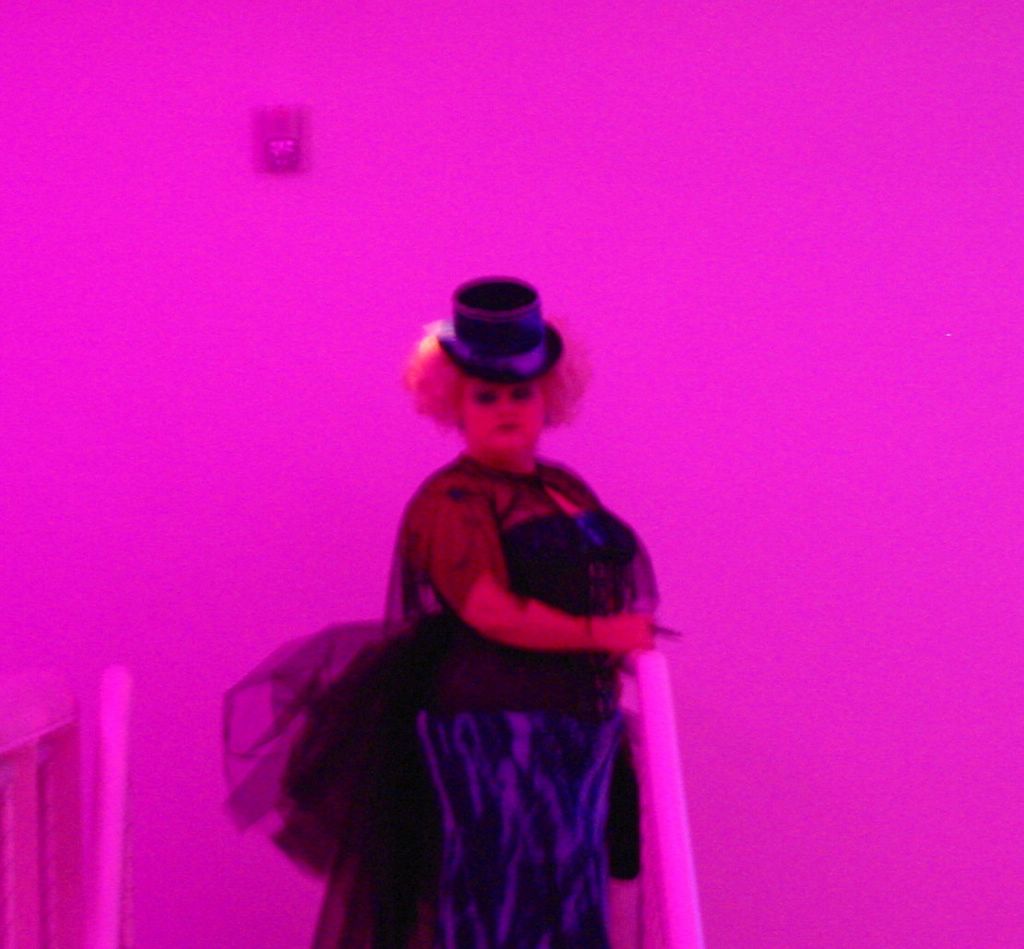 The first Supperclub opened in Amsterdam in the early 1990's, and it remains a resounding success right up to this day. The basic concept behind the restaurant is that diners lounge around on beds while enjoying a prix fixe menu, as a collection of artists and interesting characters circulate throughout the room and engage in various pieces of performance art. The original Supperclub was eventually joined by a second location in Rome, and the third site that opened this week in San Francisco is the company's first foray in the United States. Plans are already underway for Supperclubs in London, Singapore and New York.
The first Supperclub opened in Amsterdam in the early 1990's, and it remains a resounding success right up to this day. The basic concept behind the restaurant is that diners lounge around on beds while enjoying a prix fixe menu, as a collection of artists and interesting characters circulate throughout the room and engage in various pieces of performance art. The original Supperclub was eventually joined by a second location in Rome, and the third site that opened this week in San Francisco is the company's first foray in the United States. Plans are already underway for Supperclubs in London, Singapore and New York.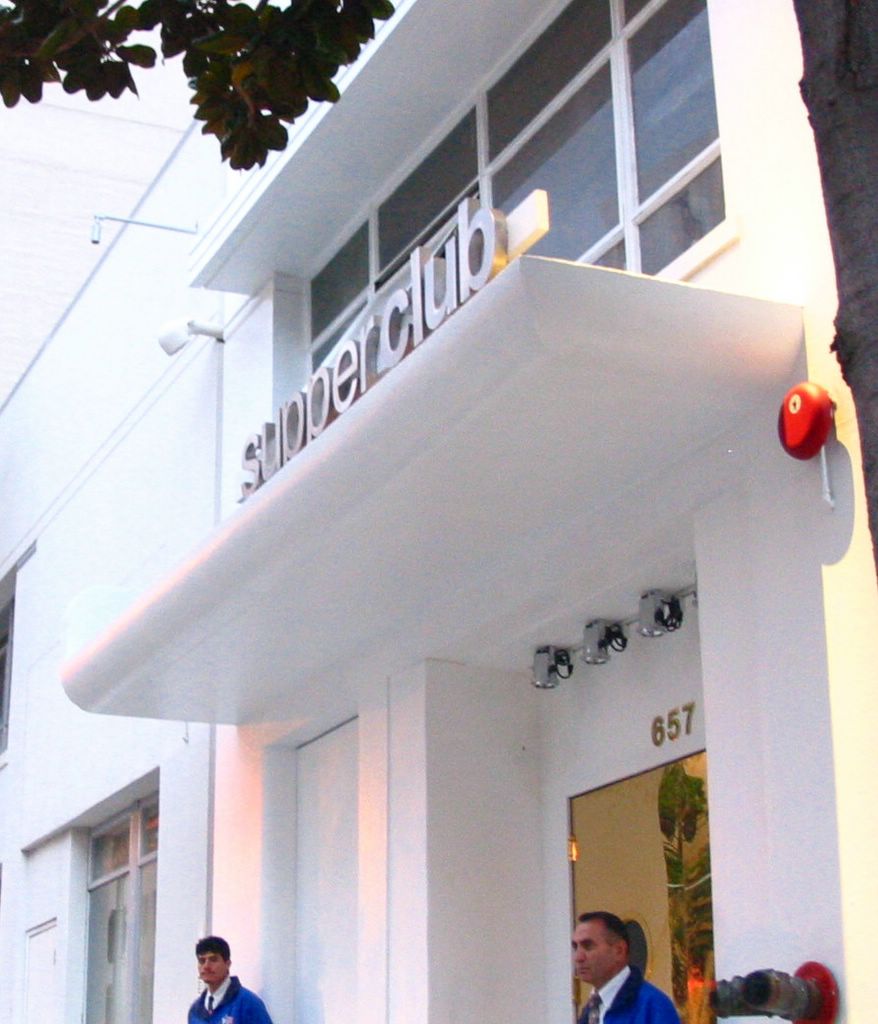 The exterior of the Supperclub San Francisco is rather unassuming; indeed, you might not even notice it against the drab backdrop of Harrison Street, were it not for the two valets standing right outside the entrance. Immediately inside the front door is an area surrounded by dark curtains, and a small oval table at which a man in drag sits with a printout containing the evening's reservations. After checking in, diners are asked to proceed into the next room - a dark, somewhat sultry, red lounge in the middle of which sits a large circular bar. Small tables are distributed around the perimeter of the room, and a short hallway on one end leads to another waiting area that appears to change colors periodically through the use of lighting. Supperclub has only one seating each evening, so diners are required to wait in the lounge area until the hosts and hostesses are ready to lead parties - one at a time - to their "beds."
The exterior of the Supperclub San Francisco is rather unassuming; indeed, you might not even notice it against the drab backdrop of Harrison Street, were it not for the two valets standing right outside the entrance. Immediately inside the front door is an area surrounded by dark curtains, and a small oval table at which a man in drag sits with a printout containing the evening's reservations. After checking in, diners are asked to proceed into the next room - a dark, somewhat sultry, red lounge in the middle of which sits a large circular bar. Small tables are distributed around the perimeter of the room, and a short hallway on one end leads to another waiting area that appears to change colors periodically through the use of lighting. Supperclub has only one seating each evening, so diners are required to wait in the lounge area until the hosts and hostesses are ready to lead parties - one at a time - to their "beds." 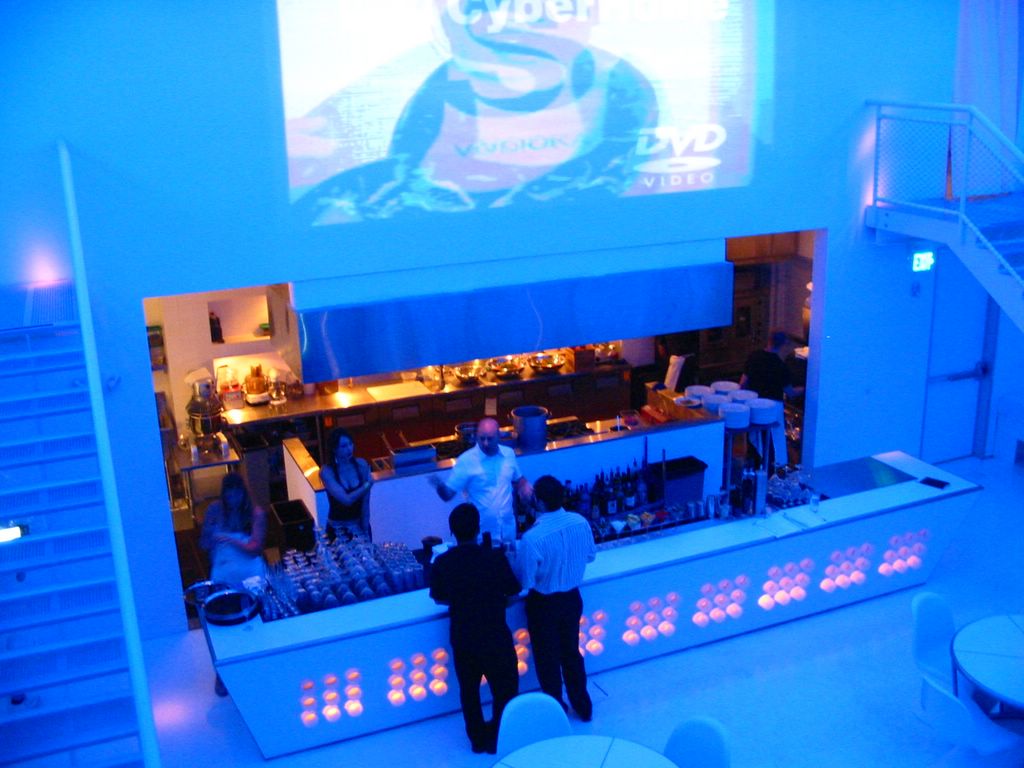 The main dining area is a relatively large room that's painted white, and it's located behind a set of doors directly off of the red lounge. The seating (i.e., bedding) on the ground level is arranged in the shape of a giant "U," with a large nearly-continuous mattress running along three of the four walls of the room (the only break being for the entrance). An exhibition kitchen can be found where the fourth wall would be, and the center of the room contains both an open area for performances and a spot for the DJ. A second level is reached by either one of two staircases, and the seating up on top mimics - and lies directly over - that on the ground level. A large wall that hangs over the exhibition kitchen displays silent video of all sorts, and a "VJ" booth is located on the second level as well. Large speakers and relatively loud music give off
The main dining area is a relatively large room that's painted white, and it's located behind a set of doors directly off of the red lounge. The seating (i.e., bedding) on the ground level is arranged in the shape of a giant "U," with a large nearly-continuous mattress running along three of the four walls of the room (the only break being for the entrance). An exhibition kitchen can be found where the fourth wall would be, and the center of the room contains both an open area for performances and a spot for the DJ. A second level is reached by either one of two staircases, and the seating up on top mimics - and lies directly over - that on the ground level. A large wall that hangs over the exhibition kitchen displays silent video of all sorts, and a "VJ" booth is located on the second level as well. Large speakers and relatively loud music give off 
the feel of being in a club, and the lighting in the room changes randomly and sometimes starkly over time - bathing the room in deep blue one moment, and bright red the next. The relatively firm beds are outfitted with crisp white sheets, large soft pillows in white pillowcases, and a small square metallic table for holding drinks. Diners are encouraged/requested to remove their shoes before climbing onto the bed. The seating areas on the communal mattress are actually quite close together, such that diners may feel a bit crowded if the restaurant is at full capacity (which it was not on opening night).
~ ~ ~ ~ ~
There's more...
Food: Initial Impressions
The food on my visit was, on balance, mixed. Executive Chef Jerry McGinnis offers a $60 prix fixe 5-course tasting menu in either non-vegetarian or vegetarian variants, and nothing else other than a small container of truffled popcorn before the meal starts. A Pumpkin Salad with Honey Cinnamon Vinaigrette and Goat Cheese was truly fantastic, the sweetness of the pumpkin augmented perfectly with the honey and cinnamon in the dressing. Meanwhile, cool and tangy goat cheese, crunchy pine nuts, and slightly bitter greens provided wonderful contrasts in temperature, texture and flavor. A Shiitake Mushroom Hot and Sour Soup with Duck was good, the flavorful broth having just a little kick and the duck serving to keep the soup interesting. Tuna Tartare served with thin firm beets was fine, but there are so many excellent renditions of this dish out there that McGinnis' version seemed somewhat unremarkable. Halibut with Tomato Sauce and Saffron Risotto was pedestrian in concept and awful in execution. The risotto, to be fair, was actually excellent - buttery, rich, and infused with the distinctive flavor of saffron. The halibut, however, was of questionable quality, and the problem was compounded by the fact that the fish was cooked only long enough to sear it. The raw center of the filet accordingly had an unpleasant odor and an absolutely terrible taste, so much so that I could not even bring myself to eat more than one bite. The sweet tomato sauce on the bottom of the plate bore no apparent relationship to the fish, and the caviar on top again raised questions regarding quality. I am all for being forgiving on a restaurant's first night in business, but this dish should not have been served anywhere or anytime - opening night or not. Dessert consisted of an simple Apple Crumble with whipped cream, a decent but unextraordinary offering.
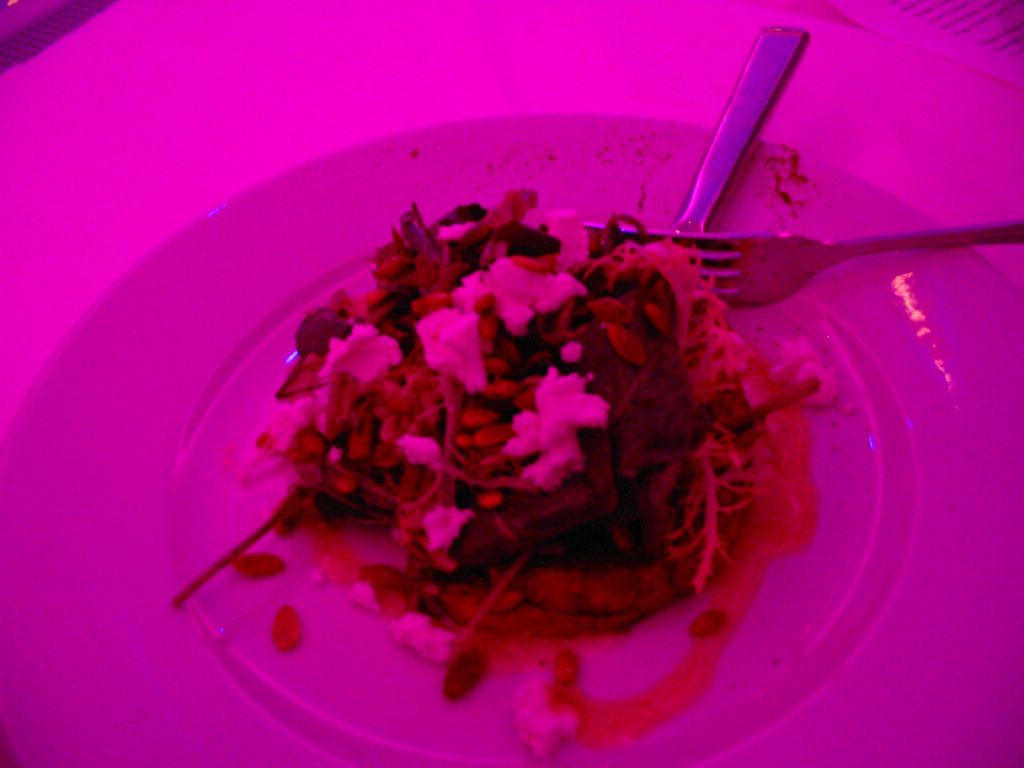 |  |  |
 | 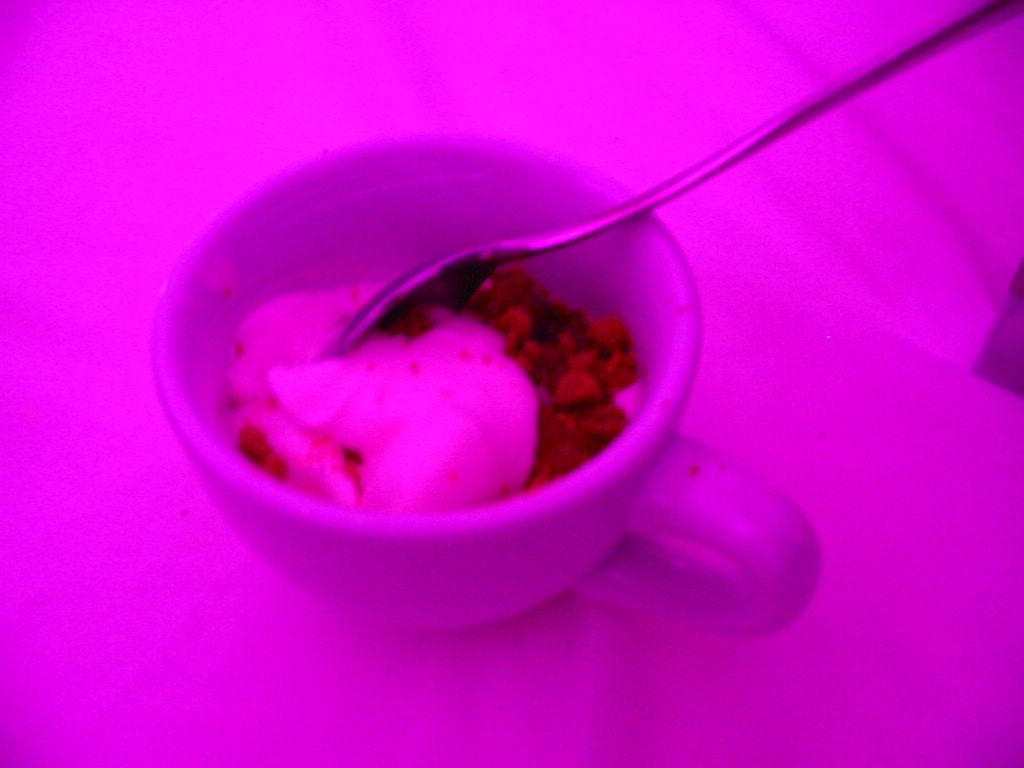 |
Service: Initial Impressions
As might be expected, we did experience some service issues on our visit that can probably be chalked up as early kinks to be worked out. The biggest problem that we saw in this regard was in connection with the timing of the courses. Even though everybody in the room was seated by around 7:30, the salad was not served until 9:00 p.m. From there, the restaurant averaged one course every 30-45 minutes, meaning that we did not finish our dessert until nearly midnight - five hours after we arrived. There were, of course, some brief entertainment sequences spread throughout the evening - a lip-synced song here, a performance art piece there, a roving
 masseur. But the slow pacing of the dinner was driven entirely by the kitchen, and we found it quite frustrating both early in the meal when we were starving, and later in the meal when we were exhausted. The quality of the service delivered by the waitstaff was also sometimes unreliable, again likely due to inexperience and/or a need to work out some of the issues that do not become clear until after a place is up and running.
masseur. But the slow pacing of the dinner was driven entirely by the kitchen, and we found it quite frustrating both early in the meal when we were starving, and later in the meal when we were exhausted. The quality of the service delivered by the waitstaff was also sometimes unreliable, again likely due to inexperience and/or a need to work out some of the issues that do not become clear until after a place is up and running.Other problems, however, cannot be excused as readily, as they are more indicative of poor advance planning than anything else. For instance, when I tried to place an order off the wine list at the very beginning of the evening, our server immediately said "I'm not entirely sure that we have that bottle in stock, so what's your second choice just in case?" How in the world is it possible for a restaurant - at the first seating on opening night - to already be out of one of the eight bottles of white wine that are set forth right on its printed wine list?! Another bit of poor planning - the kitchen frequently found itself unable to serve a particular course to the entire dining room using the same dishware. For instance, one person in our group received the crumble in a large bowl, while the rest of us received it in a small coffee cup. We were told that the portion sizes were the same, but they clearly were not. Given that the dining room was not even at capacity, I would have expected the kitchen to be able to plate each course identically for all diners.
 An example of poor design was revealed in the waitstaff's struggle to figure out how to serve food to those of us seated on the second level. At the beginning of the night, each server would grab two plates from the kitchen, walk across the room to the bottom of the stairs, climb the stairs, and then walk across the upper level to deliver the plates to a particular group. He/she would then have to reverse course and walk all the way back downstairs to the kitchen, grab two more plates, and repeat the process. The servers quickly realized that this was excruciatingly slow, so their first experiment was to arrange a chain of servers from the kitchen to the top of the stairs, and to pass the plates along like an assembly line. This did not work all that well either, so somebody then had the brilliant realization that a person standing on top of a counter in the kitchen area could readily hand plates up to a second individual standing near the top of the stairs, effectively cutting out several middlemen. This was the method used for the remainder of the evening, and the image of a waiter standing on the very place were food was being assembled, plated and prepared for service was rather disconcerting, as was the spectacle of seeing the staff trying to figure out a way to get food to diners efficiently. Would it have been that hard for the designers of the restaurant to install a large dumbwaiter or other platform that could be elevated electronically to the upper level?
An example of poor design was revealed in the waitstaff's struggle to figure out how to serve food to those of us seated on the second level. At the beginning of the night, each server would grab two plates from the kitchen, walk across the room to the bottom of the stairs, climb the stairs, and then walk across the upper level to deliver the plates to a particular group. He/she would then have to reverse course and walk all the way back downstairs to the kitchen, grab two more plates, and repeat the process. The servers quickly realized that this was excruciatingly slow, so their first experiment was to arrange a chain of servers from the kitchen to the top of the stairs, and to pass the plates along like an assembly line. This did not work all that well either, so somebody then had the brilliant realization that a person standing on top of a counter in the kitchen area could readily hand plates up to a second individual standing near the top of the stairs, effectively cutting out several middlemen. This was the method used for the remainder of the evening, and the image of a waiter standing on the very place were food was being assembled, plated and prepared for service was rather disconcerting, as was the spectacle of seeing the staff trying to figure out a way to get food to diners efficiently. Would it have been that hard for the designers of the restaurant to install a large dumbwaiter or other platform that could be elevated electronically to the upper level? Atmosphere: Initial Impressions
 I have to confess that I was unexpectedly impressed by the atmosphere at Supperclub. The biggest surprise for me came in how easy it was to eat while sitting on a mattress, and how quickly everybody acclimated to the notion of completely sprawling out between courses. I was certain going in that asking diners to sit on a bed would virtually guarantee discomfort, but clearly I was wrong. The entertainment was probably a bit "out there" for some, but it was never dull and it was certainly enough to hold one's attention. The music was frequently too loud for my tastes, making it hard to have a conversation with others in your party. Still, the music was an important component that added to a somewhat festive, club-like feel that a younger crowd would likely find quite appealing. Finally, the decor is nicely done and certainly very distinctive; you won't find anything else like it here in San Francisco.
I have to confess that I was unexpectedly impressed by the atmosphere at Supperclub. The biggest surprise for me came in how easy it was to eat while sitting on a mattress, and how quickly everybody acclimated to the notion of completely sprawling out between courses. I was certain going in that asking diners to sit on a bed would virtually guarantee discomfort, but clearly I was wrong. The entertainment was probably a bit "out there" for some, but it was never dull and it was certainly enough to hold one's attention. The music was frequently too loud for my tastes, making it hard to have a conversation with others in your party. Still, the music was an important component that added to a somewhat festive, club-like feel that a younger crowd would likely find quite appealing. Finally, the decor is nicely done and certainly very distinctive; you won't find anything else like it here in San Francisco.Closing Thoughts
Recognizing again that my sole experience was during the restaurant's first night of operation, I think that both the food and the service will eventually need to be elevated to a consistently higher level in order for Supperclub to survive. There can be little question that McGinnis has talent, as some of his offerings on Tuesday evening amply demonstrated. Now, he just needs to ensure that all five courses reach the heights of his Pumpkin Salad, and that the execution is carried out by his staff without error. If he can achieve this, diners will undoubtedly return to the restaurant time and again to partake in what will be a very good deal at $60. On the service front, the waitstaff really needs to figure out how best to serve diners - particularly those seated on the upper level - more efficiently and more professionally. Better organization in the front of the house, including with regard to the reservations line and the website, would probably be a good idea as well.
So, with all of that said, will I return to Supperclub? Well, if I were looking for a $60 prix fixe menu, I would probably be more inclined to invite a few friends to join me for a quiet dinner at La Folie. Nevertheless, another visit to Supperclub when things have settled down a bit is something that I am not yet prepared to write off.

